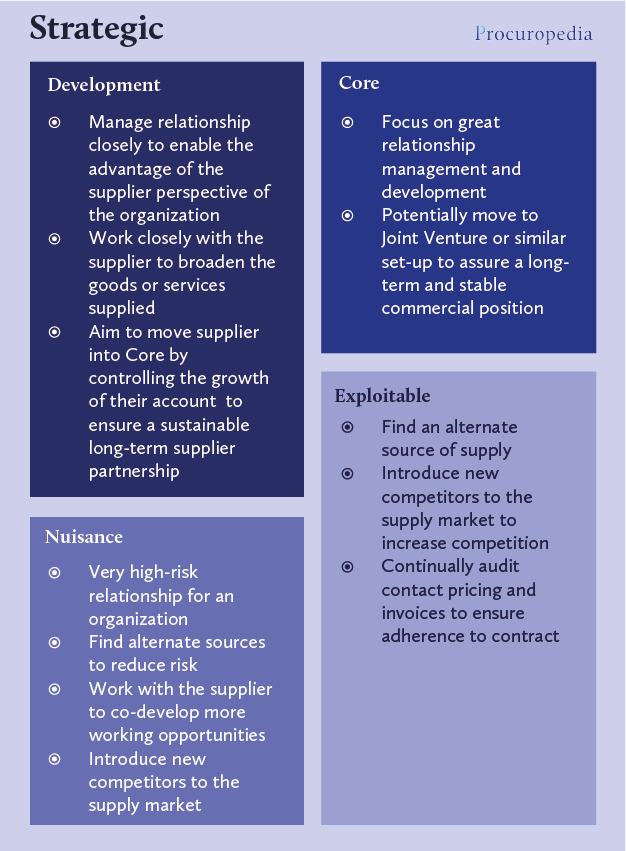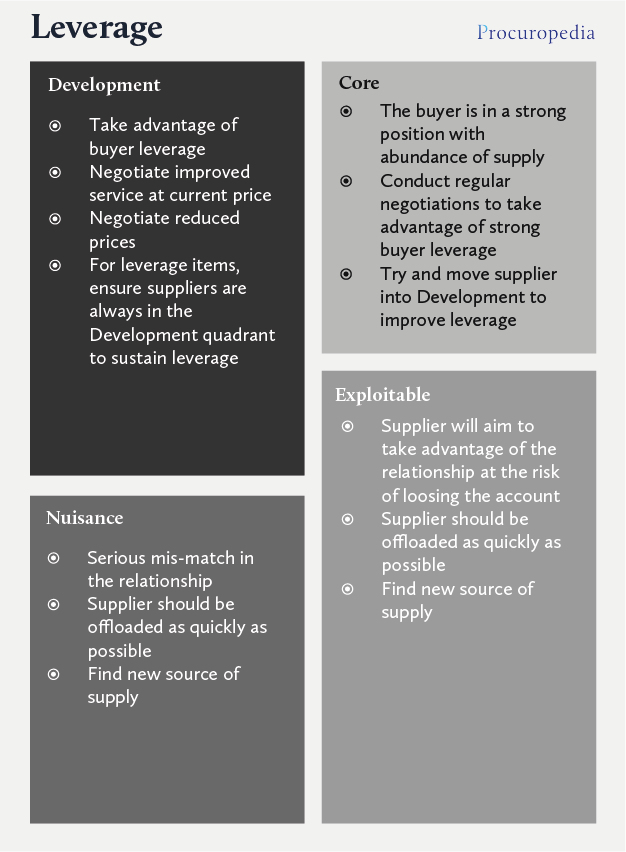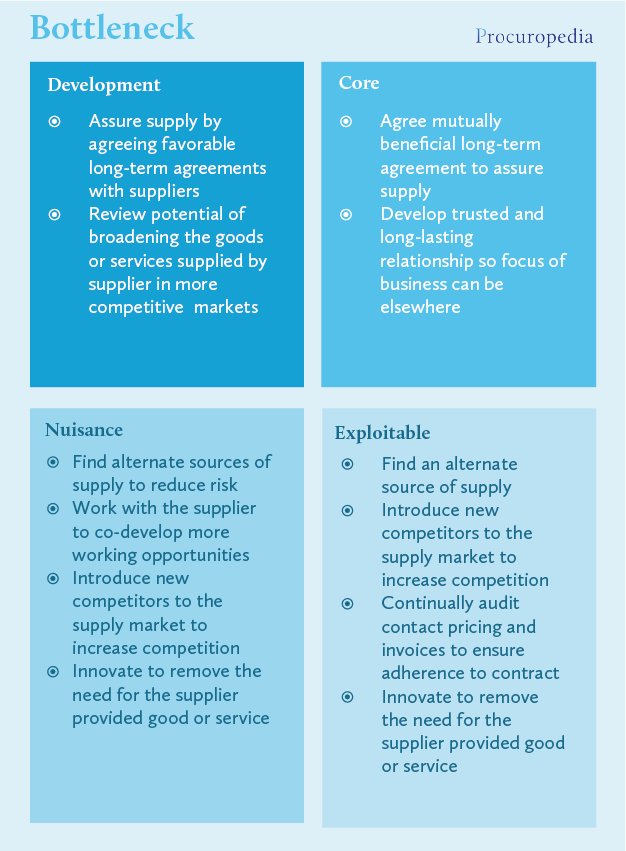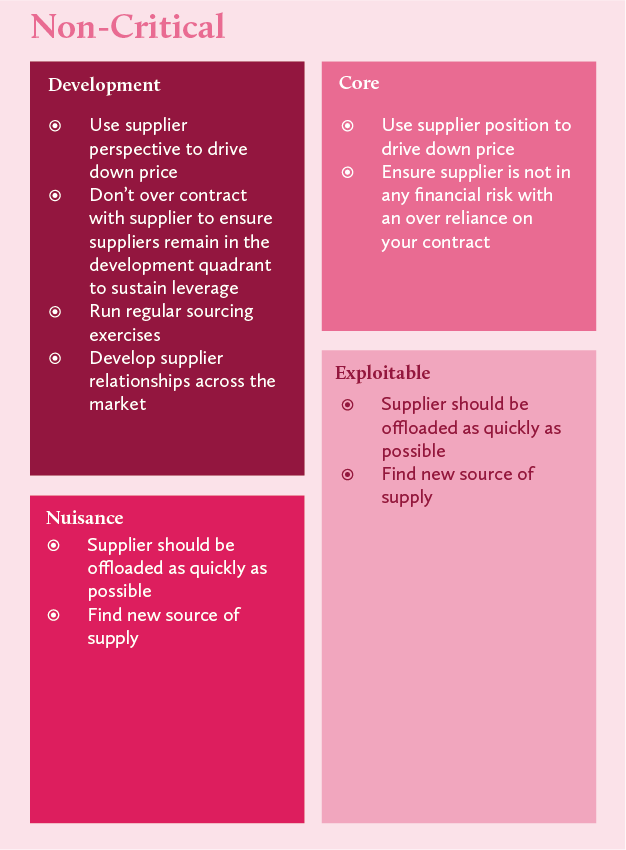Definition
Supplier Indexing sometimes referred to as the Dutch Windmill is a method of analyzing buyer-seller interdependence by combining the buyer's purchasing perspective of the supplier and the supplier’s perspective of the buyer. The method results in 16 different business-to-business relationships, each detailing different supplier and sourcing strategies.
Need more help? Have a request? Please drop us a line...





